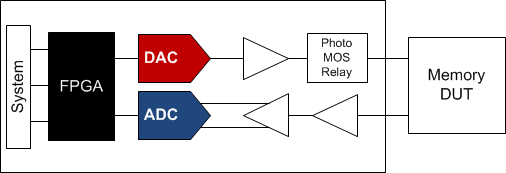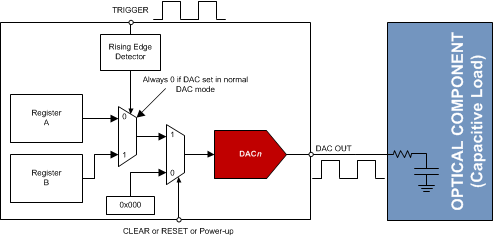We live in a time where you can summarize technological trends with one word: more. We demand more features, more integration, more efficiency, more everything. In TI’s precision digital-to-analog converter (DAC) world, we feel no differently – we too want to provide more in our devices to support engineers who are designing innovative products. Our latest “more” comes in the form of squeezing 96 DACs into one small device, the DAC60096.
You may ask yourself, “Why would you put that many DACs in one place?” The answer is in the end equipment trend behind TI’s jump into the high-density DAC market and how TI’s development is likely to enable innovation in a variety of applications.
Facilitate an optical networking application
With the daily expansion of internet traffic, the continued increase in necessary bandwidth has necessitated the innovation of new optical switching technologies to meet demands. Optical switching provides the backbone to most of our Internet communications, and reconfigurable optical add-drop multiplexer (ROADM) with wavelength selective switching (WSS) technology is one innovation that has helped drive throughput increases at important switching nodes. WSS implementations require an extremely high number of DACs operating as square-wave generators at different amplitudes. Figure 1 depicts a single DAC in the system.
Figure 1: One precision DAC channel in ROADM system
Each DAC is configured with a high and low code, with an external trigger signal toggling the output between the two. This function is repeated hundreds of times over many settings in any one system – thus the need for extreme integration. These systems are always space-constrained, so the more DACs you can pack into one device, the better. And that’s why we started developing a high-density DAC with 56 more channels than any DAC previously developed in the industry.
Enable more high density DAC designs
If you don’t do optical switching, we didn’t forget about you. While we first designed the DAC60096 with WSS in mind, there are plenty of other uses for such a large number of DACs. Take memory testers, for instance, which need a precision DAC in the transmit path with a photo MOS relay. See Figure 2.
 Figure 2: One precision DAC channel in a memory tester
Figure 2: One precision DAC channel in a memory tester
Again, this transmit path is repeated hundreds of times within one system. Equipment like this memory tester application doesn’t implement all of the DAC functions necessary for WSS. We left the DAC60096 interface uncomplicated to enable easy operation while supporting multi-channel designs. Plus, you still get the same performance you would expect from a TI precision DAC – all packaged up into one dense device.
Push the boundaries
No one has done yet what we have accomplished here. At 96 total channels, we’ve put more DACs into one device than anyone else. We want to enable you, as a user, designer or tinkerer, to push the boundaries of your applications as well.
We were crazy enough to put 96 DACs in one device, but we think that providing more was well worth it. Let us know in the comments what you would use a highly dense DAC for.
Additional resources
- Read the DAC60096 data sheet.
- Learn more about precision DACs from our TI Designs reference designs precision library.
- Read more blogs about precision DACs.
- Learn how to simplify optical module power design in this Power House post.
- Explore TI’s data converter portfolio and find technical resources.

